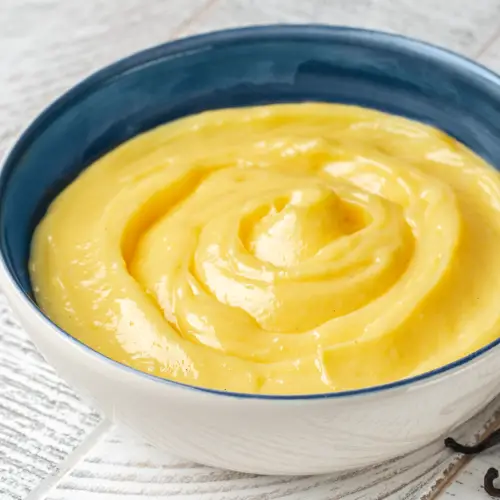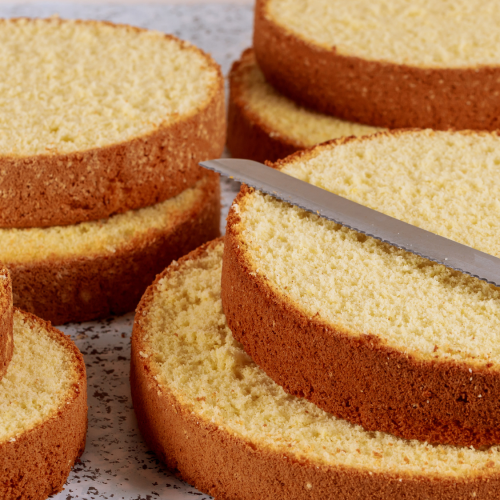Having a healthy and well-balanced Sourdough is essential for succeeding in your recipes.
However, it’s not always easy to check when the Sourdough is correctly acidic. Two acidities, Lactic and acetic, are essential for the correct starter balance.
Let’s see how to read the Sourdough’s primary signals and eventually try to fix them quickly.
SOURDOUGH’S ACIDITY
Sourdough is a unique environment made of lactic bacteria and yeasts; these organisms live in symbiosis and need each other.
This balance determines Sourdough’s acidity.
Lactic bacteria produce Lactic Acid. In contrast, yeasts produce acetic acid due to their metabolism, which contributes to determining acetic acidity.
The ratio between the number of lactic bacteria and yeasts must also be balanced.
Theoretically, it seems logical and immediate, but how can we handle this at home?
Although this may seem quite complicated, in reality, the best way to manage it is to:
- Check the status of your Sourdough acidity during every refreshment: is it too acidic or weak?
- Distinguish the cause of the excessive acidity: Does it come from an excessive lactic or acetic acidity?
- Appropriately feed the Sourdough to restore a balanced acidity.
Let’s see how to do it!
HOW TO REBALANCE THE OVER-ACIDITY IN SOURDOUGH
An over acidic Sourdough has specific characteristics:
- A Sticky or excessively stiff consistency
- Sour taste (you will feel it in the back of the tongue) or strongly metallic flavor
- The starter remains at the bottom of the bowl after the bath at 38°C (100°F) in slightly sweetened water.
If you recognize these characteristics, your Sourdough is too acidic. Now, let’s see how to distinguish its nature.
EXCESSIVE LACTIC ACIDITY
The most visible symptom of excessive lactic acidity is:
- Sticky consistency: Excessive acidity deteriorates the gluten and tends to make the dough sticky
- Bitter taste (you will feel it in the back of the tongue)
Using Sourdough with excess lactic acidity will cause many problems during the kneading process, especially when you add fats. Therefore I suggest you pay particular attention to this aspect.
To fix this problem, it will be necessary to promote the development of yeasts and, at the same time, to keep control of the proliferation of lactic acid bacteria.
First, soak the Sourdough in 38°C (100°F) water, add 4gr/l of sugar or fructose, and leave it for 20 minutes.
Once ready, squeeze the starter and feed it with a starter-to-flour ratio of 1:1.2 (1kg yeast to 1.2kg flour), using fresh water at 22°C (71°F) to 24°C (75°F) in the following proportion:
- Hydrate at 30% the amount of flour that is equal to the yeast
- Hydrate at 50% the flour that exceeds the amount of yeast
For example, If we have 1kg of Sourdough refreshed with a 1:1.2 ratio, I will use 1.2kg of flour.
To get the correct amount of water, I will need to:
Hydrate at 30% the quantity of flour that “covers” the weight of the starter (1kg x 30%): 300gr of water
Hydrate at 50% the amount of flour that exceeds the weight of the starter (1.2gr -1kg of yeast = 200gr x 50%): 100gr of water
The total quantity of water for refreshment will be 300gr + 100gr = 400gr.
After weighing all the ingredients, knead the starter, the flour, and the water. It is essential at this stage not to over-knead the dough.
When the dough is ready, roll it out, form a loaf, and finally soak it in cold tap water (about 19°C, 66°F) and leave it at room temperature (20°C, 68°F) for 24 hours.
Suppose the room temperature exceeds 20°C – 22°C (68°F – 71°F). In that case, I recommend waiting for the Sourdough to rise to the surface and then placing it in the fridge at +4°C (39°F) for the remaining time.
Essentially, the factors that allow the starter to develop yeasts better than lactic bacteria are:
- The lower temperature of the water (21-24°C, 69°F -75°F)
- The lower hydration of the dough (30% of water)
- A direct mix of the ingredients (we knead all the ingredients at the same time)
- A Shorter kneading process
EXCESSIVE ACETIC ACIDITY
In contrast to lactic acidity, a starter that has developed too many yeasts will have the following features:
- A quite stiff consistency
- Few gas bubbles (alveoli)
- Spicy taste at the tip of the tongue
- Emphasize the sour scent to the nose, close to the vinegar
Very often, when a starter has these characteristics, it’s called (in Italy) “too strong.” However, even in this case, we must rebalance the two acidities and allow the Sourdough to develop a higher concentration of lactic bacteria.
Soak the starter in the water at 38°C (100°F) with 2 grams/liter of sugar or fructose. Leave it up to 15 minutes. Afterward, squeeze out the starter and feed it using 35% water over the yeast’s weight (350g of water for 1kg of starter). Contrary to the previous case, using the correct water temperature to obtain a dough at 28°C (82°F) will be essential.
For this, you can use this “empirical” formula that I learned from the chef Giambattista Montanari:
Water Temp = 4 x final Temp – Flour Temp – Room Temp – Kneading heating (for a stand mixer, use 14°C, 8°C for a twin arm mixer, and 18°C for a spiral mixer) – Yeast Temp
!!! This formula only works with °C. You can apply the formula with °C and convert the result to °F !!!
In the realistic case with a room temperature of 20°C (68°F), a flour temperature of 19°C (66°F), the starter at 18°C (64°F), and using a stand mixer, I can get the final dough at 28°C (82°F), using the water at this temperature:
Temp Water = (4×28) -20 -19 -14-18 = 41°C (105°F)
Contrary to the previous case, after the bath, dissolve the starter into the water using a stand mixer. Then, add the flour, keeping the starter-to-flour ratio of 1:1.2.
Knead the dough a bit longer until it is homogenous and smooth.
Once again, the main factors that promote the development of lactic bacteria are:
- A Higher water temperature to obtain a dough at 28°C (82°F)
- Higher hydration of the dough (35% of water over the starter’s weight)
- Dissolve the starter into the lukewarm water
- A longer kneading process
STRENGTHEN A WEAK SOURDOUGH
The opposite case of acidic Sourdough is when the starter is weak, i.e., with a low proliferation of yeast and bacteria flora.
You can recognize when the starter is too weak by these factors:
- During the bath, it will come to the surface immediately (within 7 – 8 minutes)
- The scent of flour, without any sour note
- Few gas bubbles (alveoli) in the dough
To reinforce the starter, do a cycle of 3 refreshments, each one of them with 3 hours of fermentation, and use a starter-to-flour ratio as explained below:
- Refreshment 1: Mix 1kg of starter with 800gr of flour and 240g of water at 30°C (86°F). Soak it in the water at 26°C (78°F) and ferment for 3 hours at 30°C (86°F)
- Refreshment 2: As above, use a starter-to-flour ratio of 1:0.9 (1kg of starter, 900g of flour, and 270g of water at 30°C, 86°F).
- Refreshment 3: Once the dough is ready, soak it in cold water at 19°C (66°F) and let it ferment for 24 hours at room temperature.
CONCLUSION
To succeed in homemade bread or an excellent panettone, it is crucial to have a sourdough with balanced acidity and fix any excess before starting the recipe.
The best way to do this is to check the sourdough’s daily status and feed it correctly until it returns to the correct acidity.
























52 comments about “S.O.S Lievito”
Salve, ho letto i vari articoli pubblicati su questo sito sul lievito madre.
Normalmente rinfresco il lievito madre ogni 3 – 4 giorni nel rapporto 1:1:0,5 e lo conservo in frigo. Sicuramente e’ sbilanciato in termini di acidita’ lattica / acetica.
Per poterlo riequilibrare posso semplicemente rinfrescarlo ogni giorno, per una settimana a temperatura ambiente 18-19 gradi?
Ciao Antonio,
molto probabilmente avrai un lievito “debole” con poca acitdità lattica (dovuta alla conservazione in frigo).
Inizia a rinfrescarlo giornalmente e conservarlo a temp ambiente, come hai giustamente osservato. In base a come il lievito risponde nel bagnetto, puoi aggiustare la proporzione dei rinfreschi come suggerito sopra!
Tieni conto che impiegherai circa 7-10giorni per riequilibrare il lievito. Alla fine del processo, fai un ciclo di 3 rinfreschi a 3.30 (come se dovessi usare il lievito per una ricetta) e poi rimettilo in coservazione a temp ambiente.
A presto!